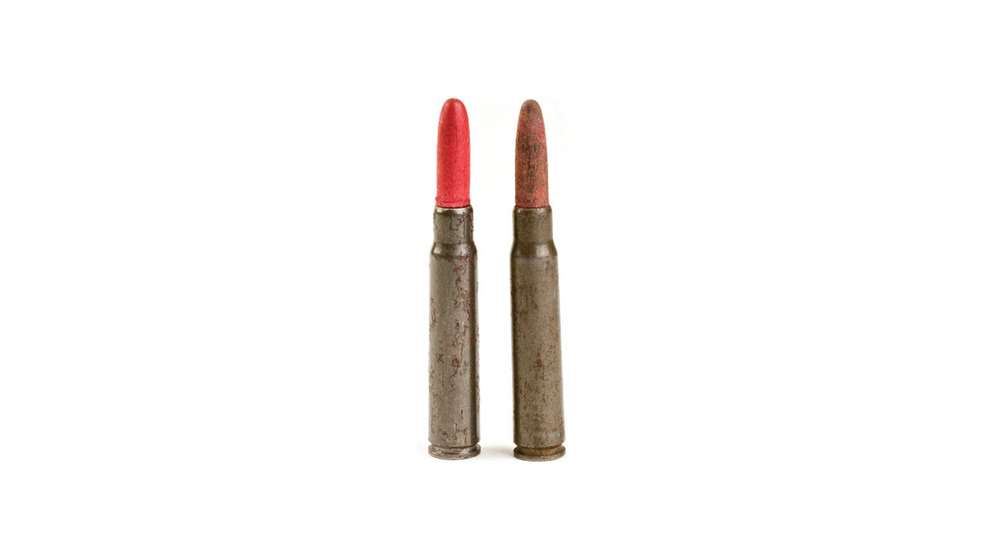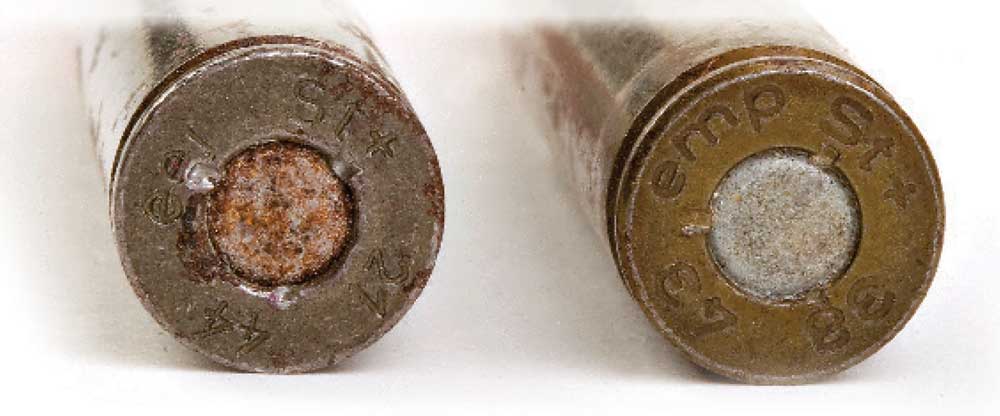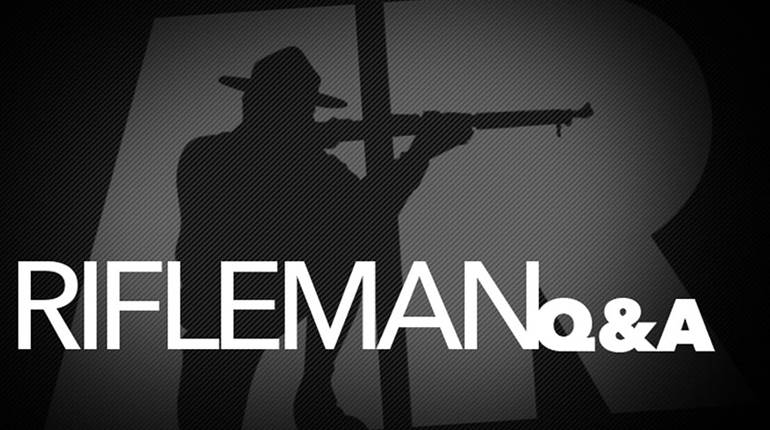
Q. I would very much appreciate it if you could identify the origin and purpose of the cartridges shown in these photos. The bullets appear to be wooden, and all of the cases are primed.
A. The wooden-bulleted 8x57 mm Mauser loads you ask about were known as “exercise” cartridges—what we would call blanks. They were made from cases that were substandard or defective for some reason, and they were used for training, testing and ceremonial purposes. The German army named these cartridges Platzpatrone.

There were many different variations, and many different headstamps. There were also several color variations, although most were purple, red or blue. Most World War II-era 8x57 mm cartridges have three-letter manufacturer codes. On these cartridges, “emp” stands for Dynamit Nobel and “eel” represents H. Wissner of Brotterode in Essen.
—Dave Andrews
This “Questions & Answers” was featured in the February 2005 issue of American Rifleman. At time of publication, “Questions & Answers” was compiled by Staff, Ballistics Editor William C. Davis, Jr., and Contributing Editors: David Andrews, Hugh C. Birnbaum, Bruce N. Canfield, O. Reid Coffield, Charles Q. Cutshaw, Charles M. Fagg, Charles Karwan, Angus Laidlaw, Evan P. Marshall, Charles E. Petty, Robert B. Pomeranz, O.D., Jon R. Sundra, Jim Supica, A.W.F. Taylerson, John M. Taylor and John Treakle.
To subscribe to the magazine, please visit the NRA membership page and select American Rifleman as your member magazine.





































